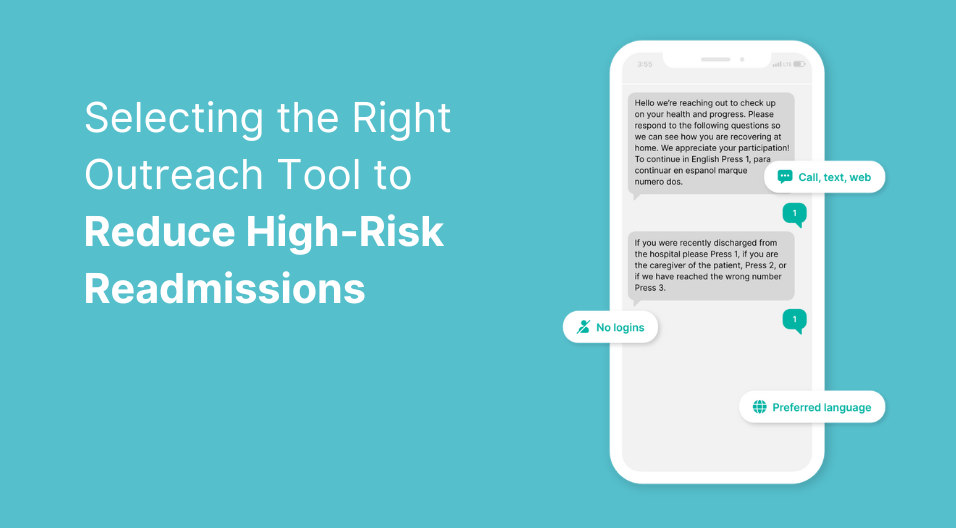On November 15-16, 2018, CipherHealth hosted healthcare leaders from across the country for our Third Annual Thought Leader Forum. This Forum focused on two important aspects of care: Population Health Management and the development/use of best practices for digital rounding and outreach.
In this two-part blog series from the Thought Leader Forum, we will highlight the key takeaways from the event and share some interesting discussions that took place over the two-day roundtable sessions. In this article, we cover the in-depth discussion around population health.
The Rise of Population Health
Over the last decade, population health has been an increasingly popular buzzword. With the enactment of the Affordable Care Act, healthcare has seen a large shift towards value-based payments, which is a huge driving force behind population health’s popularity. The core idea behind population health is that hospitals and other healthcare organizations can take a more active role in improving the health of their communities – in addition to the health of the individual.
Innovative organizations such as UCSF Health have taken a leading role in participating in population health programs, demonstrating that there is much to be gained by focusing on improving the health of the community. We would like to share the outstanding work done at UCSF Health so others can learn about what it takes to implement successful strategies to manage population health.
UCSF Health’s Population Health Journey
Gina Intinarelli, PhD, MS, RN, Vice President of Population Health at UCSF Health, co-developed and led the sessions at CipherHealth’s recent Thought Leader Forum. During the session, Intinarelli provided a history of UCSF Health’s journey in population health management, which began in 2011 as an Accountable Care Organization (ACO). Since then, UCSF has opted to take on financial risk for specific patient populations through a variety of alternative payment models (APMs). As the health system looks towards the future, the UCSF Vision 2020 contains three elements:
- A culture of continuous performance improvement
- A leader in destination programs
- A high-value system of health care
These three elements guide the organization’s priorities to ensure long-term success. A foundational element is using available data that helps shape specific strategies.
Utilizing Data to Create Meaningful Population Health Programs
Among the many priorities in a high-value health care system, Vision 2020 is finding ways to better manage its Medicare fee for service population by participating in the Medicare Shared Savings Program (MSSP), a popular program for ACO participants. The UCSF Health initial data from CMS identified a high number of end-stage renal disease patients, patients with mental health disorders, and 10% of members over age 85. As a result, the teams at UCSF Health have developed a clinical intervention framework with a focus on proactive care management after an assessment of the patient’s mobility, cognitive impairment, social support, and goals of care/care coordination.
Leveraging Technology to Streamline Population Health Processes
As UCSF Health developed their population health processes and teams, there was a clear need for technology to help drive resource efficiencies. In 2014, UCSF Health partnered with CipherHealth to develop a care management platform that would help care managers work with both internal and external resources to improve care coordination.
Incorporated into the CipherHealth’s care management platform are evidence-based practices to ensure patients receive the right care at the right time in the right place. Intinarelli highlighted how the tool can help manage specific populations by showcasing results from their participation in Bundled Payment for Care Improvement Advanced (BPCI-A) ortho bundles. Because bundled payment programs involve combining the payments for physician, hospital, and other health care provider services into a single bundled payment amount, providers are incentivized to work together to ensure all things go smoothly throughout the 90-day episode.
Using the care management platform has helped UCSF achieve the BPCI quality targets, including reduced readmissions, by driving efficiencies across the team. UCSF has achieved a lower length of stay for the anchor admission, reduced use of SNFs and inpatient rehab, and improved patient satisfaction as measured by HCAHPS through patient and family engagement throughout the care continuum. The 90-day post-discharge contact includes routine outreach to the patient that inquires about physical therapy, symptom management, medication questions, follow-up appointment 12 weeks after surgery, and overall recovery.
Improving Population Health with Preventive Engagement
In addition to their MSSP and BPCI programs, UCSF Health also participates in projects under the Public Hospital Redesign and Incentives in Medi-Cal (PRIME) program.
In looking to meet preventive measures, UCSF Health implemented an outreach strategy to improve cancer screening and follow up in its outpatient clinics. In working with panel managers to explore ways of increasing the number of scheduled and completed screenings, UCSF wanted to compare outcomes between their manual process and with CipherHealth’s patient outreach platform. With CipherOutreach, 249 patients completed at least one of the eligible screenings in a six-month time period – representing more than a three-fold increase as compared to traditional manual outreach efforts. By leveraging a scalable outreach process, UCSF achieved the 90th percentile for all three PRIME cancer screening metrics; colorectal, cervical, and breast cancer. CipherOutreach empowered staff to scale meaningful patient engagement in order to proactively detect cancer across a primary care population of more than 80,000.
Intinarelli also shared there have been opportunities to use the nurses’ clinical expertise more effectively – as nurses can be more efficient in the use of their time, reach the right patients that need clinical intervention and support, and experience additional job satisfaction.
In addition to closing care gaps in cancer screening, Intinarelli shared that UCSF is exceeding performance goals and past performance for flu immunization. In 2018, UCSF is exceeding 84% vaccination rate among its targeted population by using CipherOutreach – either a voice call or a text.
Advice to Other Healthcare Organizations Participating in Population Health Programs
Intinarelli reflected on what helps UCSF Health be a success with the new payment models. Acknowledging the aspect of uncertainty, Intinarelli summarized its success factors:
- Resource commitment: By creating a strong organizational infrastructure that includes the formation of the Office of Population Health in 2015, the organization was able to expand primary care services and implement a data and analytics infrastructure that tied to their goals.
- Leverage expertise: By providing population health expertise, which includes complex care management and home-based palliative and geriatric care, UCSF Health is able to address health inequities and social determinants of health. They are then able to achieve scale by using CipherHealth’s patient engagement platform in innovative ways.
- Forge strategic partnerships through collaborations with other providers: By collaborating with providers such as SNFs, home health agencies, and hospice services, UCSF is able to form a clinically integrated network and work alongside UC-wide health and Medicare ACO collaboratives.
As Intinarelli described the use of the tools, she once again highlighted the importance of incorporating evidence-based practices to generate improved outcomes and increased clinical screenings – resulting in higher levels of staff satisfaction with meaningful work.
UCSF Health is both a regional and national leader in population health, and the participants at the Thought Leader Forum shared their appreciation for hearing directly from its leader about how the health system has organized itself to address the challenges of payment reform and to better meet the health care needs of its community.








